Exploring the Strongest Genjutsu in Anime Lore
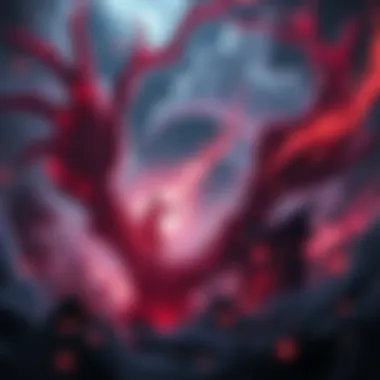
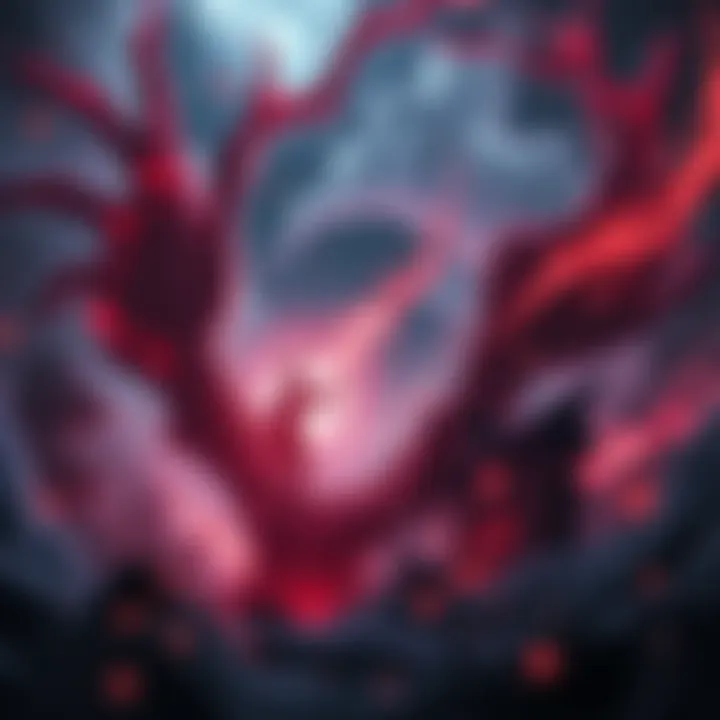
Intro
In the vast expanse of anime, few subjects ignite debates and curiosity quite like the concept of genjutsu, a term that embodies illusionary techniques astutely crafted to elicit psychological responses in characters and audiences alike. Genjutsu doesn't merely serve as a mechanism of conflict; it weaves intricate narratives that elevate the emotional stakes of a plot and deepen character development.
Understanding Genjutsu
To truly appreciate the significance of genjutsu, one must first comprehend its mechanics. Unlike straightforward combat techniques, genjutsu operates on a different plane—manipulating perceptions, distorting realities, and inducing fear or despair. This psychological warfare draws viewers in, blurring the lines between reality and imagination. As such, it becomes more than just a tool for antagonists; it reflects the characters' inner turmoils or hidden desires.
As we embark on this exploration, we will dissect the strongest instances of genjutsu found within renowned anime narratives. We aim to shed light on how these illusions impact character interactions, steering the narrative, and revealing deeper themes and conflicts. By navigating this realm, we seek to uncover the secrets behind the most potent genjutsu, unraveling their implications in both the immediate story arc and the greater discourse of anime lore.
Prepare to delve deep into a world where the mind plays tricks, envy thrives, and illusions reign supreme.
Let’s uncover the most formidable genjutsu that anime has to offer—where shadows and echoes dance in the minds of characters and viewers alike.
Defining Genjutsu
In this deep dive into the complex realm of anime, the concept of genjutsu stands as a pivotal element. It's more than just a tool for characters to wield; it serves as a narrative device that plays with perception and reality. Genjutsu is rooted in the manipulation of the mind, causing opponents to experience vivid illusions, significantly impacting their actions and decisions. Understanding genjutsu is crucial for grasping the nuances of character development, plot twists, and the psychological warfare that plays out in many stories.
Origins and Context
The origins of genjutsu can be traced back to traditional Japanese beliefs about spirits and illusions. In folklore, the concept of creating false images or perceptions has been woven into various tales for centuries. This foundational mythos feeds into the anime genre, where genjutsu takes on a more structured and defined role. For instance, in Naruto, the term originates from the "Shinobi" (ninja) lore, emphasizing a blend of spiritual and physical techniques. The term itself can be loosely translated to mean "illusionary techniques," underlining the intricate link between the art of deception and psychological manipulation.
Furthermore, this practice reflects a broader cultural fascination with the nature of truth and illusion in Japanese society. It invites viewers to ponder questions of reality, something that resonates with themes in many modern narratives, not just those found in anime.
Mechanisms of Genjutsu
Delving into how genjutsu operates reveals the fascinating methods characters employ to ensnare their opponents. Fundamentally, it hinges on psychological manipulation, where the target’s senses are hijacked. For example, a character might induce overwhelming fear or happiness in their foe, distorting their reality. This can lead to paralysis or confusion, making it easier to secure a victory in combat.
Genjutsu often activates through eye contact or specific hand signs, integrating visual and auditory cues to heighten the illusion's effectiveness. Yet it doesn’t stop at sensory overload. It creates a comprehensive experience that can disarm even the most seasoned combatants.
"The mind is a battlefield, and genjutsu is the weapon that can turn foes against themselves."
The techniques can vary vastly between characters, with some focusing on inducing pain, while others may construct elaborate fantasies. The effectiveness relies on the wielder’s depth of understanding in manipulating human emotions and fears.
In practical terms, many anime show characters engaged in mental feuds using genjutsu, switching from combat to intellectual showdowns where finding a way out of an illusion is just as critical as physical strength.
In summary, defining genjutsu is not merely about outlining its mechanics or origins, it's an exploration of how these illusory techniques shape the narratives within the anime. Understanding this concept allows audiences to appreciate the intricate dance between reality and illusion that defines much of the genre.
Cultural Significance of Genjutsu
The concept of genjutsu transcends mere entertainment; it weaves itself intricately into the cultural fabric of society, especially in Japan. Understanding the cultural significance of genjutsu opens the door to appreciating its philosophical depths and social commentary within anime narratives.
At its core, genjutsu represents the struggle against illusion and deception, a theme that resonates deeply within the human experience. In a world saturated with information, discerning reality becomes increasingly complex. This theme reflects the challenges faced by individuals who often find themselves trapped in their own perceptions. Genjutsu serves as a mirror, prompting the audience to contemplate their own realities and the illusions they may not even realize they are navigating.
Genjutsu in Japanese Folklore
Japanese folklore is rich with stories that revolve around spirits and supernatural beings, many of which harbor deceptive abilities. One can look at the infamous kitsune, or fox spirits, known for their ability to create illusions that ensnare unsuspecting humans. These tales speak to a long-standing cultural fascination with the unseen forces that manipulate reality—an idea that genjutsu captures flawlessly. Whether it’s the ghostly apparitions in urban legends or the cunning manipulation of characters in traditional stories, the roots of genjutsu in anime can be traced back to these rich narratives.
- Legends of Yōkai often depict creatures such as the tengu and the yuki-onna, who deceive travelers through their magical illusions, much like the strategies employed in various genjutsu techniques.
- The emphasis on the distinction between reality and illusion runs parallel to the teachings in Buddhism, particularly the notion of maya or illusion, pointing to a shared cultural understanding of perception and enlightenment.
Thus, genjutsu embodies the essence of these age-old stories while retaining its own unique identity in modern media. It is a continuation of a cultural dialogue that delves into the nature of truth and deception.
Themes of Illusion and Reality
Illusions crafted by genjutsu are not just tricks of the mind; they serve as a critical examination of the human psyche. When characters are entrapped in these techniques, they often confront their deepest fears, desires, and unresolved conflicts. This layered narrative structure adds depth to character motivations and growth.
- Conflict of Perception: Genjutsu highlights the struggle between what is perceived and what is real. Characters find themselves questioning their senses, leading to intense psychological battles that can redefine their relationships with others.
- Moral Ambiguity: The techniques often serve to showcase not just the power of the user but also the vulnerabilities of the victims. This moral complexity invites viewers to ponder the ethical implications of manipulation, making them aware of the thin line between survival and victimhood.
Through these themes, genjutsu enriches various unforgettable narratives, enhancing the emotional stakes and making the experience more engaging. It encourages viewers to delve deeper into how perceptions shape identities and relationships, ultimately reinforcing the art of storytelling in anime.
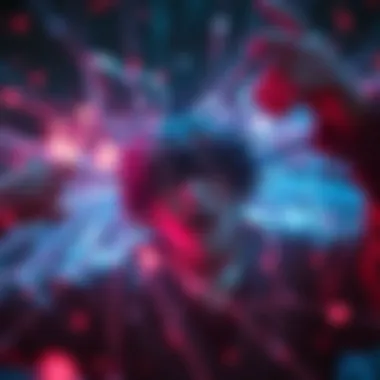
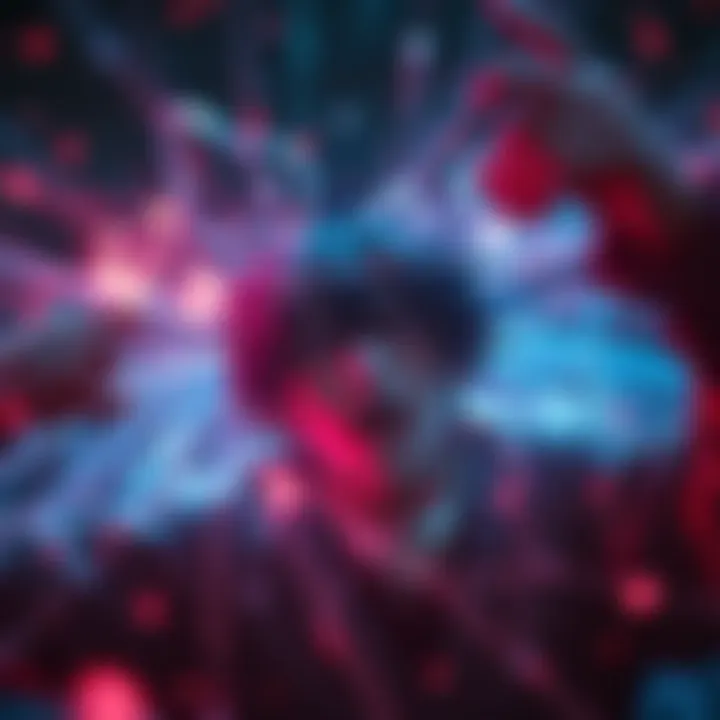
Icons of Genjutsu in Popular Culture
In the realm of anime, the concept of genjutsu resonates deeply with audiences, acting not just as a plot device, but as a rich tapestry woven into the fabric of character development and storytelling. The prominent figures who wield genjutsu not only showcase immense power but also represent complex themes that reflect on humanity, perception, and reality itself. As these characters engage in battles of wits and illusions, they highlight the psychological warfare inherent in their abilities, making the exploration of genjutsu essential to understanding their narratives.
Notable Characters Who Use Genjutsu
When discussing the titans of genjutsu, a few characters inevitably rise to the top. Itachi Uchiha from Naruto stands out with his infamous Tsukuyomi, a technique that allows him to trap his opponent in a realm where he controls time and space, creating a nightmare scenario that feels like an eternity. Another formidable figure is Madara Uchiha, who wields Kotoamatsukami, a genjutsu technique that manipulates the target's mind without them realizing it’s happening, making it one of the most potent techniques in the series.
Additionally, Shinobu Kocho from Demon Slayer utilizes a form of illusion alongside her fighting techniques, demonstrating how different genres within anime approach genjutsu. Each character mirrors a unique aspect of not just combat but also the philosophical explorations about the mind and perception.
Comparative Analysis of Their Techniques
Examining the methods of these characters brings to light fascinating differences in their approaches to genjutsu.
- Itachi Uchiha and Tsukuyomi:
Strengths: Instant capture, complete control over time and senses. The emotional scars left on the target are profound.
Weaknesses: Requires eye contact and is limited by chakra reserves. - Madara Uchiha and Kotoamatsukami:
Strengths: Manipulation occurs without the target’s awareness, ensuring they are manipulated into believing their choices are their own. This technique can change the course of events subtly.
Weaknesses: Only usable once every ten years, thus putting a serious limit on its applications. - Shinobu Kocho’s Illusions:
Strengths: Her techniques often blend a sense of reality with dreams, leaving her opponents questioning their own senses.
Weaknesses: Less direct in combat, making her susceptible to physical attacks when focused solely on deception.
Overall, these characters exemplify how genjutsu serves as more than mere magic; it manifests deeper narratives surrounding choice, control, and the very nature of reality. The mind games played through these abilities not only enhance the thrill of battles but also provoke thought about manipulation and the ethics of power within storytelling.
"In the dance of genjutsu, the player feels powerful, but are they merely puppets in a grand performance?"
As anime continues to evolve, these icons of genjutsu remind us of the complexity and depth present in character development and the broader narrative arcs they inhabit. Understanding and analyzing these powerful figures contributes significantly to the appreciation of their stories, making the study of genjutsu a fascinating journey for fans and scholars alike.
For further reading and exploration, you might visit Wikipedia's page on Genjutsu, where you will find more information on the psychological implications and techniques behind these characters.
The Psychology Behind Genjutsu
Understanding the psychology behind genjutsu offers invaluable insights into how these mind-altering techniques function within anime narratives. Genjutsu serves as more than just a visual or narrative gimmick; it encapsulates a deeper exploration into the human psyche, where characters are often pushed to their limits, forcing them to confront their fears and insecurities. Ultimately, grasping this psychological aspect provides a richer comprehension of character motivations and conflicts, laying the groundwork for intricate plot developments.
Psychological Mechanisms of Deception
At the heart of genjutsu lies a fascinating array of psychological mechanisms designed to deceive. These aren’t merely tricks but profound manipulations that exploit the vulnerabilities of the mind. Psychological theories such as cognitive dissonance come into play, where characters face conflicting emotions and experiences. For instance, in the world of Naruto, Itachi Uchiha's Tsukuyomi doesn’t just show horrific imagery; it immerses the target in an experience that distorts their perception of time. As time stretches endlessly in this illusion, the victim's beliefs about their own strength and willpower are shattered, creating an internal struggle that resonates with viewers.
Moreover, the idea of selective attention is often employed, where characters are led to focus on specific details while crucial elements slip by unnoticed. For example, in Death Note, Light Yagami's deceptive maneuvers use mental misdirection that keeps both allies and enemies questioning their own understanding of reality. This psychological sleight of hand not only heightens tension but illustrates the lengths to which characters go to maintain control and power.
Impact on Character Dynamics
The impact of genjutsu on character dynamics cannot be overstated. These illusions foster intense psychological battles, complicating relationships and altering the course of the narrative dramatically. When one character is ensnared in an illusion, their vulnerability comes to the forefront, often leading to revelations that might not emerge in a straightforward confrontation.
Consider Sasuke Uchiha’s journey through multiple genjutsu experiences. Each confrontation with genjutsu doesn’t merely serve as a tool for combat; it unearths layers of pain, regret, and ambition hidden beneath. The manipulation of perceptions magnifies conflicts, forcing characters to evaluate their decisions and relationships. The repercussions can be profound: trust can shatter, alliances can falter, and the very essence of one’s identity can be called into question.
"Genjutsu is a mirror; it reflects your innermost fears and desires back at you, often in a twisted form."
This psychological aspect leads to character growth or, in some cases, tragic downfalls. The way characters respond to genjutsu can highlight their core values, revealing who they are at their most vulnerable yet also their most authentic. This duality is what makes genjutsu not just a plot device, but a profound commentary on the nature of perception and reality itself.
In summary, the psychology behind genjutsu provides a lens through which one can analyze the deeper implications of these techniques on character development and narrative complexity. As anime continues to evolve, the interplay of psychological warfare through genjutsu remains a poignant topic, resonating with both the viewer’s experience and the thematic richness of the medium.
For further exploration of these psychological concepts, you can visit resources like Wikipedia, Britannica or forums on Reddit.
Strongest Genjutsu Techniques
In the multifaceted realm of anime, genjutsu emerges as a pivotal element, weaving intricate strands of storytelling that often blur the line between reality and illusion. These powerful techniques captivate audiences by showcasing characters who manipulate the minds of others, crafting experiences that can instill fear, despair, or even confusion. Understanding the strongest genjutsu techniques is not merely an academic endeavor; it unveils the underlying themes of power dynamics, psychological manipulation, and the nature of perception itself. This section will delve into the most formidable genjutsu strategies that have shaped narratives and defined characters across various anime.
Kotoamatsukami: The Ultimate Illusion
Kotoamatsukami is often regarded as the pinnacle of genjutsu techniques in the world of Naruto. This ability grants the user the power to influence someone's mind directly without them realizing it. It’s akin to planting a seed of suggestion that blossoms into a complete alteration of thought or behavior. What makes Kotoamatsukami particularly notable is its ability to manipulate perception without causing any physical harm, thus allowing the user to control their target silently. The most striking instance of this technique is seen through the character Shisui Uchiha, whose mastery of this ability made him a key player in the tragic Uchiha massacre.
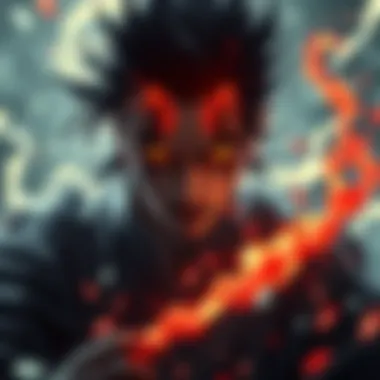
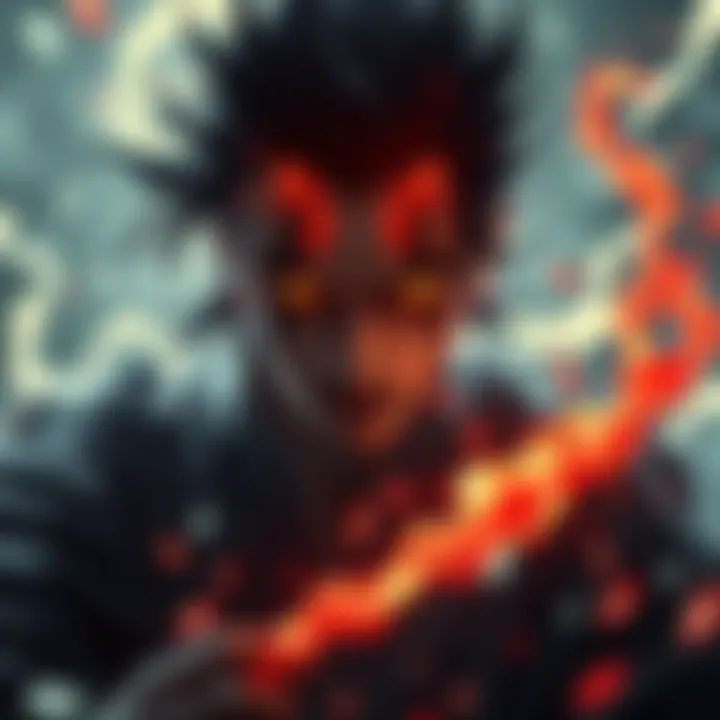
"With Kotoamatsukami, control over one's mind becomes a dance—elegant yet merciless."
The implications of employing such a technique are vast. It raises ethical concerns about free will and the morality of manipulating someone’s thoughts. Moreover, Kotoamatsukami's strategic value lies in its subtlety; it can pivot the course of events without revealing the user's hand. This attribute grants an extraordinary advantage in confrontations, laying the groundwork for complex narratives driven by the unseen machinations of its wielders.
Tsukuyomi: The Reality-Twisting Nightmare
Tsukuyomi, another pivotal technique from Naruto, is often viewed as the counterbalance to Kotoamatsukami. This technique is a nightmarish illusion that ensnares its victim in a dimension governed by the caster’s will. Within this timeless realm, the user can manipulate the environment and experiences to induce psychological trauma or instill despair. For instance, Itachi Uchiha’s use of Tsukuyomi often played on the greatest fears of his adversaries, trapping them in personal visions that felt indefinitely real.
The sheer horror of Tsukuyomi lies in its capacity to inflict severe mental anguish. The victim is subjected to a form of psychological torture, making this technique radicly different from others that might aim to influence thought more gently. The relational dynamics it creates between the user and the victim are stark, as it represents a complete control over one’s mind, reduced to mere playthings in the hands of an adept user. In terms of character development, Tsukuyomi allows viewers to explore themes of trauma and psychological resilience, elevating the storytelling to a realm littered with moral ambiguities.
Others Worth Mentioning
Beyond the heavyweights of Kotoamatsukami and Tsukuyomi, the anime landscape is peppered with other notable genjutsu techniques that deserve discussion. Techniques such as the Demonic Illusion: Tree Binding Technique from Naruto ensnare adversaries, proving effective in combat scenarios. Characters like Madara Uchiha wield genjutsu with prowess, demonstrating a mastery over illusions that alters the battlefield.
In Death Note, while not traditional genjutsu, the psychological games between Light Yagami and L reflect a similar manipulation of perception and reality. The tension derived from their mental warfare echoes the principles of genjutsu, underlining how storytelling can blend various forms of mind manipulation.
Additionally, Steins;Gate presents its own brand of psychological illusions, where time travel becomes a tool for altering life experiences, creating alternate realities that grapple with causality and choice.
In summary, while Kotoamatsukami and Tsukuyomi stand tall as paragons of genjutsu, the realm is rich with techniques that not only engage but also challenge viewers to consider deeper philosophical questions about reality and the power of the mind. Genjutsu serves as a narrative vehicle, carrying the weight of character development and thematic exploration.
Analyzing the Strengths and Weaknesses
Genjutsu, often seen as the art of illusion, plays an indispensable role in narrative intricacies within anime. Understanding the strengths and weaknesses of various genjutsu techniques not only enhances our appreciation for character depth but also unveils how these psychological strategies shape pivotal plot developments. In this section, we untangle the multifaceted nature of genjutsu, revealing how it can be a double-edged sword—both a powerful asset and a potential liability.
Strengths of Top-Tier Genjutsu
The potency of high-level genjutsu is rooted in its ability to manipulate perception, affecting both physical and emotional states of characters involved. Here are a few notable strengths:
- Mind Control: Techniques such as Tsukuyomi grant the user the ability to trap their opponent in a realm where time and effects are distorted. This can result in severe psychological trauma, leading to a significant advantage in battles.
- Illusion Casting: The capacity to create vivid illusions can distract or mislead opponents, causing them to act against their better judgment. With Kotoamatsukami, for example, users can implant suggestions without the target realizing they are being manipulated.
- Mental Warfare: Many top-tier genjutsu techniques exploit the vulnerabilities of the mind, targeting insecurities or fears. This not only gives the caster the upper hand in combat but also illustrates the deeper themes of trust and betrayal in various narratives.
One might consider the case of Itachi Uchiha from Naruto, who expertly employs genjutsu to maintain his image while steering others' perceptions, demonstrating the subtleties of manipulation at play.
"The strongest genjutsu is not one that merely deceives the senses, but one that alters, inescapably, the very fabric of belief and trust."
Common Countermeasures and Defenses
While genjutsu is undeniably strong, it is not foolproof. Characters and stories often introduce countermeasures that provide defenses against this form of mental warfare. Here are key strategies often depicted in various anime:
- Strong Willpower: Characters with a steely resolve can sometimes break free from genjutsu. This emphasizes themes of inner strength and determination.
- Awareness and Training: Knowledge about genjutsu can significantly mitigate its effects. Characters like Sasuke Uchiha have trained extensively to recognize and counter these techniques, showcasing how preparedness can turn the tide.
- Allied Support: Collaboration is often a powerful antidote against lone deceptive tactics. When characters work together, they can shield one another from assaults on their minds, reiterating the importance of unity.
In summary, worthy defenses against genjutsu are as essential as the illusions themselves. They reflect a rich layer of strategy ingrained in anime storytelling, turning battles into not just contests of strength, but tests of will and wit.
Case Studies of Genjutsu in Specific Anime
Understanding the application of genjutsu in particular anime provides unique insights into how these techniques serve narrative purposes and influence character development. By closely examining specific case studies, one can appreciate the nuanced representation of psychological manipulation in storytelling. These examples are not just limited to showcasing flashy techniques; they also tap into deeper themes of control, perception, and the struggle between reality and illusion.
The significance of case studies lies in their ability to shed light on how different creators interpret genjutsu’s concept. Each anime utilizes these mind-bending illusions in distinct manners that reflect philosophical and psychological elements. This type of examination enriches the viewer's understanding of characters and their motivations, while also highlighting the broader implications of genjutsu in character dynamics and overall plot progression.
Naruto and Its Pioneering Techniques
Naruto redefined the perception of genjutsu, showcasing it not merely as a tactic for combat but as a vehicle for storytelling. Within the Naruto universe, characters like Itachi Uchiha have become synonymous with masterful genjutsu use. Itachi's technique, Tsukuyomi, stands out due to its unique ability to bend time and manipulate the victim's perceptions within an illusion.
In one notable instance, he traps Sasuke within his genjutsu, forcing the young ninja to relive traumatic experiences. This technique illustrates how the emotional landscape of characters can be manipulated through psychological means. In this way, the series uses genjutsu to reveal deeper layers of character relationships and internal conflicts.
- Key Aspects of Naruto’s Genjutsu:
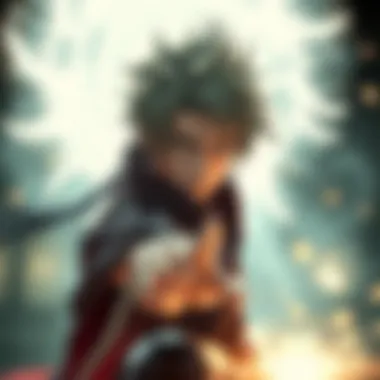
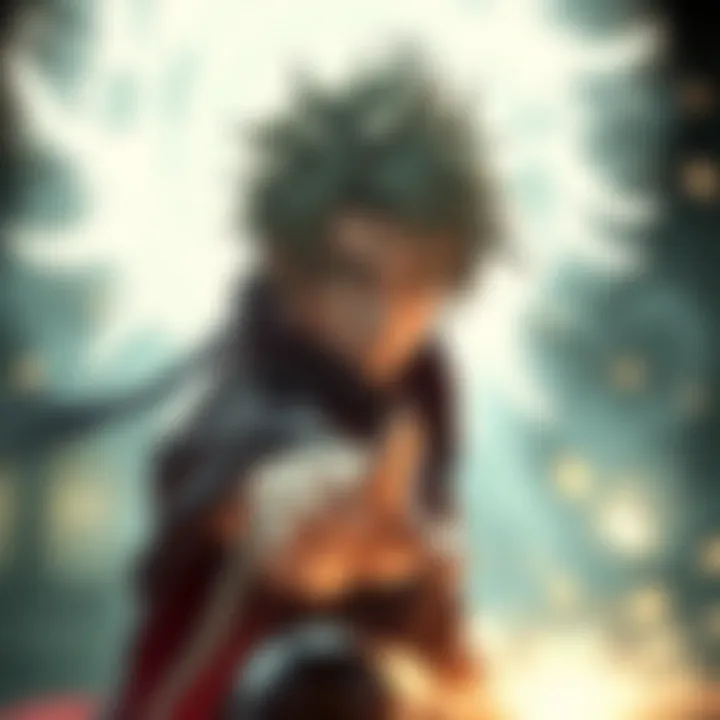
- Emotional Depth: Genjutsu often evokes powerful emotions, making it a substantial narrative tool.
- Character Development: Characters' experiences with genjutsu contribute to their growth and decisions, reflecting on their traumas and fears.
- Thematic Resonance: The illusionary battles often mirror real-life struggles against one’s weaknesses, illuminating themes of acceptance and overcoming fears.
Overall, Naruto not only pioneers techniques but also enriches its plot by intertwining genjutsu with character arcs and emotional truths.
Death Note: Mental Chess of Deception
On the other hand, Death Note offers a paradigm shift in depicting psychological manipulation. While not traditional in the way genjutsu is portrayed in anime like Naruto, it still embodies the essence of deception and mind games. Here, the character Light Yagami employs the Death Note in a manner akin to a genjutsu – crafting elaborate plans that lead his opponents to false conclusions.
Throughout the series, Light engages in a cat-and-mouse game with L, using strategy and foresight to manipulate perceptions of his actions and intentions. The tension arises not from physical confrontations, but from the psychological strain of outsmarting an equally intelligent adversary. This is emblematic of how genjutsu can manifest beyond visual illusions, shaping narratives through cerebral conflict.
- Notable Elements in Death Note:
- Strategy Over Action: The focus lies in mental duels rather than physical prowess, showcasing how deception can be just as impactful.
- Manipulation of Perception: Characters often deceive others regarding their true motives, blurring the line between truth and illusion.
- Psychological Warfare: The series invites viewers into the mind of its characters, illustrating how fear and uncertainty can be weaponized.
In this context, Death Note serves as an interesting case study for examining the psychological aspects of genjutsu, showcasing its relevance in shaping narratives focused on manipulation and perception.
By exploring these specific examples, one can glean the profound impact of psychological manipulation in anime storytelling, revealing how genjutsu enhances character dynamics and plot intricacies.
Future Implications of Genjutsu in Storytelling
In the realm of anime, the narrative devices wielded by creators often extend far beyond what meets the eye. Genjutsu, a method of harnessing psychological manipulation through illusion, holds the potential to transform not only character arcs but also entire storylines. As we look forward, one must consider how the evolution of technology and storytelling techniques may sculpt the future of genjutsu. The importance of this topic reverberates across multiple dimensions, particularly in how these illusions reflect real-world complexities and psychological truths.
Evolving Perspectives on Illusions
The perception of illusions in narratives has significantly shifted over the years. In the past, genjutsu was frequently viewed as mere spectacle, a flashy display of power resting primarily on visual allure. Yet, modern storytelling pushes for a deeper engagement with these concepts. Creators like those behind Attack on Titan or Fullmetal Alchemist craft scenarios where the line between reality and illusion is blurred, prompting the audience to wrestle with moral dilemmas, identity crises, and existential queries.
This evolving viewpoint encourages a more thoughtful exploration of character motivations and the consequences of their actions. For instance, the use of genjutsu to uncover hidden fears or desires creates a conduit for character development. It allows the audience to observe vulnerabilities that might remain concealed under normal circumstances. Such narrative techniques fuel the intrigue around characters and compel viewers to connect on an emotional level, paving the way for more profound commentary on psychological and societal issues.
Potential for New Techniques in Future Works
Looking ahead, there are vast horizons for the conceptualization of new genjutsu techniques. As animation technology becomes increasingly sophisticated, the implementation of more intricate illusions will likely evolve. This opens avenues for animators and writers alike to craft multi-layered narratives. One can envision techniques akin to augmented reality, wherein a character's perception can mold the world around them in real time. Such advances could immerse viewers deeper into the experience, blurring boundaries not just within the anime itself but extending to audience involvement and interaction.
Also, the fusion of psychological theories with genjutsu can lead to innovative storytelling possibilities. For example, exploring concepts like cognitive dissonance and its impact can result in a rich tapestry of illusion woven tightly with personal conflict. The multi-faceted nature of genjutsu could demonstrate how beliefs are as fragile as the illusions that shape them. As genres blend and converge, the integration of these sophisticated techniques may redefine audience expectations, presenting a landscape where challenges to perception become part of the core narrative structure.
"Illusions are the shadows of reality. In every shadow, lies potential for new narratives to unfold."
In summation, the future of genjutsu in anime storytelling is ripe with possibilities. As creators continue to innovate and audiences seek more engaging content, the use of psychological manipulation through illusion holds the potential to redefine how stories are told and experienced. The depths of human emotion and the intricate workings of the mind await exploration, presenting endless opportunities to illuminate the complexities of life, through the lens of genjutsu.
Finale
In discussing the intricacies of genjutsu within the anime landscape, it becomes evident just how significant this mechanism is beyond its surface level of sheer entertainment. Not only does it serve as a remarkable tool for storytelling, but it also unveils the depths of psychological warfare that can unfold within character interactions. Genjutsu, by manipulating perceptions and realities, offers creators a unique platform to explore the frailties of the human mind.
Summary of Key Insights
Through our exploration, several key points stand out. The layers of genjutsu are rich and multifaceted. For instance:
- Psychological Complexity: The techniques reveal underlying themes of fear, desire, and control. Characters experiencing genjutsu often face their innermost demons, prompting growth or downfall.
- Cultural Reflections: Genjutsu is not merely fiction; it reflects real-world psychological principles, showcasing how perceptions can be distorted by various influences.
- Character Dynamics: The use of genjutsu impacts relationships within stories, creating tension and shifting allegiances. Thus, understanding genjutsu enriches appreciation for character arcs and motivations.
Ultimately, engaging with genjutsu allows one to see beyond the illusions presented, recognizing the richer narratives resonating through the veil of deception.
The Everlasting Fascination with Genjutsu
The fascination with genjutsu stems from its ability to transcend mere plot device to mirror human behavior and psychology. Within the anime narrative, this illusionary art form serves as a metaphor for the challenges people face every day, such as battling inner conflicts and navigating societal pressures. Its allure lies in the way it challenges perceptions, forcing both characters and viewers to confront uncomfortable realities.
Moreover, the evolving nature of storytelling in anime suggests that genjutsu will continue to thrive. As new creators enter the field, their interpretations and adaptations may introduce innovative techniques or themes, breathing fresh life into this time-honored dynamic.
In essence, the continuous exploration of genjutsu not only captivates audiences but also promises to expand the boundaries of imagination within the realm of anime, keeping its relevance alive for years to come.
"Through the weave of lies and truths, genjutsu explores the essence of human nature itself."
As we have uncovered, the examination of genjutsu in anime is not only about powerful techniques and their applications but also about diving into the deeper currents that drive character interactions and narrative progressions. This essence, intricate yet profound, ensures that audiences remain engaged and reflective long after the credits roll.











